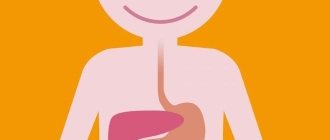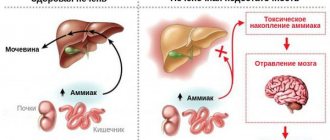Vegetovascular dystonia (VSD) is a syndrome that can be caused by the characteristics of the patient’s body or provoked by various external and internal factors. VSD often worsens in the fall. Attacks that occur every day exhaust a person and disrupt the quality of life. Drug therapy for exacerbation of VSD is often ineffective.
Doctors at the Yusupov Hospital provide preventive treatment for patients suffering from vegetative-vascular dystonia. Neurologists, endocrinologists, therapists, and gastroenterologists collectively decide on the patient’s examination regimen. Severe cases of vegetative-vascular dystonia are discussed at a meeting of the Expert Council, in which candidates and doctors of medical sciences take part. The medical staff is attentive to the wishes of patients and takes into account their emotional background.
Is neurosis a mental illness, a neurotic disorder or a borderline state?
First of all, it should be said that the term neurosis is practically not used in foreign, especially American, psychiatric practice. Similar trends are also observed in domestic psychiatry. But among the people, the concept of neurosis does not lose its relevance and it is understood as different types of negative mental manifestations. Statistics show that 20-30% of the urban and 10-15% of the rural population have certain types of neuroses. About a quarter of all mental disorders are neurotic. In women and children they are more severe and develop more often than in men. In addition, women are more susceptible to the hysterical form of neurosis. From a scientific point of view, neurosis (psychoneurosis or neurotic disorder) is a group of neuropsychic disorders that are psychogenic in nature, reversible (functional) in nature and not accompanied by fundamental changes in the psyche. The psychogenic nature of neurotic conditions implies that the main causes of neuroses are internal or external factors that can cause psychological trauma, stress, emotional or intellectual overstrain. The term neurosis itself was introduced into medical practice back in 1776 by William Cullen, a doctor from Scotland. By the way, in a broad sense, neurosis is understood as functional disorders of higher nervous activity (HNA) and is used not only in medicine, but also in biology. It turned out that not only humans, but also higher animals can suffer from neuroses. According to the International Classification of Diseases (ICD-10), the category of mental disorders includes neurotic disorders associated with stress, as well as somatoform ones. The traditional division into neuroses and psychoses is not provided for in the ICD, but nevertheless is quite actively used in modern medical practice. The differences between neuroses and psychoses are that: • With neuroses, people are aware of their condition, are critical of it and retain the ability to control their behavior, i.e. a person is not divorced from reality. In psychosis, there is a disconnect from reality, delusions and various types of hallucinations. Between them there is a borderline state in the form of some disorganization of the psyche. All these divisions are arbitrary and sometimes it is quite difficult to distinguish neurosis from a borderline state. • Neurotic disorders do not have a physiological cause, but may have symptoms of a somatic illness and psychological manifestations that are painful for a person. But at the same time, unlike psychoses, psychotic symptoms and progressive personality changes towards degradation and dementia are not observed. • The root cause of neurosis is always a psychological factor. These can be external reasons (conflicts at work, business failures, family dramas, troubles with children, news of a serious illness, judicial review, etc.), as well as internal, hidden in the subconscious conflicts between a person’s needs and himself imposed bans on their satisfaction. In addition, factors predisposing to the development of neuroses may be: • Mental – character traits, conditions of upbringing and personality formation, its relationship with society, inflated levels of self-esteem and expectations. • Biological – disturbances in the functions and relationships of various neurotransmitters that increase the vulnerability of the individual to the effects of stress and psychological trauma. May be genetically determined or acquired.
Drug therapy
The course of neurosis is associated with a simultaneous decrease in the level of brain serotonin, therefore long-term use of antidepressants - selective serotonin reuptake inhibitors - is prescribed for treatment. At the initial stage of treatment with antidepressants, their adverse reactions may occur, and the patient’s condition may worsen. In view of this, it is important not to stop taking the prescribed treatment, but only to reduce the dose of the drugs. Then, as tolerance improves, the dosage is gradually increased to the recommended values. Over time, the symptoms of neurosis decrease and the patient's condition improves.
Important: the antidepressant must be selected by a doctor! The selection takes into account the individual tolerability of the drug and its effectiveness for specific neurotic symptoms.
For the treatment of neuroses accompanied by insomnia or poor sleep, sedative and hypnotic antidepressants are prescribed. Sometimes, with great caution and in small doses, in short courses (to avoid addiction), tranquilizers are prescribed. When treating neuroses with concomitant weakness, memory loss, and asthenia, nootropic drugs are used. The duration of treatment is usually several months; if necessary, the course must be repeated.
How are neurosis, symptoms and signs of its main varieties classified?
The following types of neuroses are differentiated: • Anxiety disorders and phobias in the form of increased anxiety, panic attacks and unreasonable fears (phobias). In the clinic, this type of neurosis is divided into three stages. At the 1st stage, fear arises only in a truly dangerous situation, when the patient is afraid of something, at the 2nd stage - when thinking about the possibility of being in a similar situation again, at the 3rd stage - even when verbally mentioning phenomena, somehow associated with a phobia. The symptoms are dominated by various fears. This may be a fear of contracting some disease (for example, cancer, syphilophobia or speedophobia), which can ultimately lead to hypochondria. Phobias such as claustrophobia (fear of enclosed spaces), agoraphobia (fear of open spaces and crowds), etc. are quite common. • Obsessive-compulsive disorders, manifested in obsessive actions, thoughts, memories and aspirations, perceived by a person as unpleasant and alien. Patients are not able to cope with them on their own. Persons prone to suspiciousness, anxiety and introspection (reflection) are susceptible to this type of neurosis. Obsessive thoughts can manifest themselves in the form of counting steps, passing cars of a certain color, repeated attempts to answer meaningless questions, for example, why there are so many letters in one word, and more or less in another. Particularly difficult to perceive is the obsessive desire to do something shameful and unacceptable, for example, to undress naked in a public place, swear obscenely, or kill a loved one. Obsessive actions (compulsions) can reach the point of absurdity - washing hands up to 100 times a day, returning home multiple times to check that household appliances, gas, or doors are closed. There is also the performance of ritual actions before certain events (look in the mirror a certain number of times before leaving the house, jump or pull your ear, etc.). Only after such rituals can the patient leave home with confidence that nothing unpleasant or terrible will happen to him. • Hysterical reactions, otherwise conversion disorders, accompanied by changes in sensory sensations, disturbances in motor and autonomic reactions, memory loss, etc. Women are more susceptible to hysteria. The signs of neurosis in women are so diverse and changeable that they can resemble many bodily ailments. Hysteria is often called the great malingerer. The predisposition to it is more pronounced in individuals with an overly labile or immature infantile psyche. Hysterical disorder is manifested by such signs as a constant desire to be the center of attention, to play the main role in the team and family, and to dominate others. Hysterics are also characterized by hyper-emotionality, mood swings, a tendency to exaggerate their own role, demonstrative behavior, and elements of theatricality. Those around them often get the impression that a hysterical person revels in his illness, advertises it in every possible way and uses it to attract attention. The extreme manifestation of hysteria is a hysterical seizure, reminiscent of an epileptic one. • Somatoform disorder, otherwise somatic distress disorder, associated with the manifestation of symptoms of a physical disease without the presence of the disease itself. Signs of neurosis in this case most often resemble symptoms of a particular disease. A peculiarity of this type of neurosis is the particular torment and excessive focus of the patient’s attention on somatic manifestations, aggravated by contact with medical workers, which cannot be persuaded either by the results of clinical and laboratory examinations or by medical reasoning. The patient is confident that he has a disease, is deaf to any counterarguments and constantly initiates new examinations, which are practically useless and often expensive. Moreover, the symptoms differ in duration and progressive variability. For example, vegetative-vascular dystonia may be replaced by hypertension, tachycardia may be complicated by arrhythmia, stomach pain may be accompanied by intestinal spasms, etc. Moreover, only one symptom is rarely present; multiplicity is usually characteristic, for example, migrating pain throughout the body, neurosis with dizziness, headaches, high or low blood pressure, tachy- or bradycardia. Autonomic dysfunction of the cardiovascular, respiratory and gastrointestinal systems is often observed. All this significantly reduces the quality of life of the patient himself and his immediate environment. In therapeutic practice, almost every fourth patient has complaints that are not confirmed by a clinical diagnosis. • Neurasthenia – a state of increased intellectual fatigue, headaches with mental stress, inability to completely relax and sleep disturbances. This condition deserves more detailed discussion due to its relevance and impact on mental activity and intellectual abilities.
Psychotherapy
In order to alleviate neurotic symptoms (by taking antidepressants), psychotherapy is carried out:
- Cognitive-behavioral therapy – formation in the patient of the correct reaction to the situation, strengthening his adequate assessment of his behavior in a traumatic situation, changing the way he responds to it;
- group psychotherapy – takes place for 1.5 hours daily or weekly, in the form of discussions. Topics are determined in advance; they relate to the biography, behavior of group members, and life situations. Group therapy has rules: strict confidentiality, sincerity of participants, experience “here and now,” specificity of topics. Groups can be closed - with a constant composition of participants, or open - someone comes, someone stops visiting;
- hypnotherapy - suggestion is carried out in a special state of the patient, hypnotic. The session includes 4 stages: hypnotization, therapeutic suggestion, therapeutic rest, dehypnotization;
- autogenic training;
- breathing exercises for relaxation and concentration;
- non-verbal methods of psychotherapy - music therapy, art therapy, dancing and pantomime.
The most effective treatment is a combination of antidepressant medication and cognitive behavioral therapy.
What are the main signs of neurasthenia?
The symptoms of this condition are varied, but with a detailed clinical picture they are typical for most patients. The disorder develops in stages: • At the 1st stage, autonomic disorders are observed, among which tachycardia predominates even with light exertion, sweating, poor circulation in the extremities with coldness, as well as poor sleep and loss of appetite. The sensory reaction is significantly enhanced, especially the visual one, when a person is unable to tolerate even diffused light, closing the windows with thick curtains and staying in twilight. In addition, unexpected and sharp feelings of hunger may occur in response to the slightest appetizing smells and even innocent mentions of food. Often the extreme manifestations of increased sensitivity are severe headaches. • At the 2nd stage, sensorimotor disorders develop, the reaction to sensations from the internal organs increases. Increased sensitivity to temperature changes - severe chills in cool weather and increased sweating in hot weather. Noise in the ears, sensations of the work of one’s own heart and stomach, which a person normally does not feel and does not even think about. Signals from the body and its individual organs are so strong that they keep a person in constant tension, forcing him to react violently and anxiously to any changes on their part. • At the 3rd stage of neurasthenia, affective disorders with mood swings and an exaggerated response to even the most insignificant events join all this. People easily and quickly get offended, become whiny and irritable, every trifle or insignificant failure becomes a source of excitement and worry. For some, irritability develops into short temper, anger and resentment. In fact, there is an imbalance of neuropsychic and emotional processes, which leads to a decrease in intellectual abilities, concentration, understanding and memorization of abstract concepts.
Depending on the etiological factor, 2 variants of neurasthenic disorder are differentiated: • Neurosis of exhaustion of the nervous system, as a result of constant and significant overload. • Reactive neuroses, the cause of which is psychological trauma (acute or chronic). In addition, there are 2 forms of development of neurasthenia: • Hypersthenic with a predominance of irritability, increased sensitivity to external stimuli, muscle tension during neurosis, nervous tics and decreased attention. • Hyposthenic, which is characterized by rapid fatigue, a constant feeling of tiredness, decreased performance, lethargy and physical weakness. The neurasthenic state may be complicated by the addition of symptoms of other neurotic disorders. These can be hysterical reactions, obsessive fears and doubts, somatic manifestations, etc.
Diagnostics
In each specific case of a neurotic disorder, a varied pattern of symptoms of different types of neurosis may be demonstrated. All this can be accompanied by various symptoms of mental and somatic disorders, which creates certain difficulties in diagnosis. Therefore, the qualifications of the attending physician, his medical experience and professional skills are so important.
The collected anamnesis is of great importance - the patient’s complaints, his description of the nature and intensity of the symptoms, the time of their manifestation. It will also be important to talk with loved ones, since they can often provide valuable information. Medical observation in a hospital setting may be required to confirm or refute the diagnosis.
It is necessary to carefully check the level of hormones in the body, since the development and course of depression or neurosis are strongly influenced by hormones. This is especially true for thyroid hormones; even minor changes in their levels, which are difficult to detect using conventional tests, can have a very significant effect on well-being. If a hormonal imbalance is detected, proper hormonal therapy must be initiated. In some cases, normalization of thyroid function leads to a complete cure for neurosis.
Differentiated diagnosis is important when you need to be able to distinguish one pathology from another. Provided that neuroses are often accompanied by somatic symptoms, the doctor will prescribe an appropriate examination. In addition to general laboratory tests (blood, urine), specific studies (hormonal levels) may be required. If a brain disorder is suspected, magnetic resonance imaging (MRI) or computed tomography (CT) is recommended.
What are the most common signs of neuroses?
Among the mental symptoms, you should pay attention primarily to the following: • Emotional discomfort that occurs for no apparent reason. • Problematic communication with others. • Unpreparedness to make decisions. • Inadequacy of self-esteem with its overestimation or underestimation. • Frequent anxiety, a feeling of fear, anticipation of something unpleasant and scary, the development of phobias, the appearance of panic attacks. • Perversion of the system of values, aspirations, preferences, cynical attitude towards life and the environment. • Irritability and reduced resistance to stress. • Touchiness, tearfulness, increased vulnerability. • Obsession with traumatic circumstances. • Rapid fatigue due to intellectual stress, impaired memory, ability to concentrate. • Increased sensitivity to sudden changes in temperature, loud sounds, bright light. • Sleep disorders with difficulty falling asleep, night awakenings, superficial character, disturbing dreams, morning fatigue. A neurotic disorder may be indicated by physical symptoms of neurosis such as: • Pain of various localizations (headache, heart, gastrointestinal, muscle and joint) • Sudden changes in pressure. • Disorders of the vestibular apparatus with dizziness, imbalance, etc.: difficulty maintaining balance, dizziness. • Eating disorders, expressed in overeating or undereating, a sudden feeling of hunger with a quickly onset feeling of satiety. • Psychalgia (physical pain accompanying strong mental experiences, otherwise mental pain), increased concern for one’s own health, hypochondria. • Autonomic disorders - surges in blood pressure, tachycardia, cough, frequent urge to urinate, gastrointestinal dysfunction, sweating, chills, numbness and coldness of the extremities, etc. • Speech disorders in the form of stuttering. • Sexual dysfunction (decreased potency and libido) is rarely observed.
If neurosis is not treated in time, the symptoms intensify, and individual symptoms may become generalized. For example, pressure surges during stressful situations can turn into vegetative-vascular dystonia (otherwise neurocirculatory dystonia), associated with dysfunction of its sympathetic and parasympathetic departments and a violation of the neurohumoral regulation of the cardiovascular, respiratory system, intestinal motility, etc.
Advantages of treatment at the clinic of JSC "Medicine"
The course of neurosis does not lead to disability, but often disrupts the full life of the patient and people close to him. In modern medicine, there are 3 stages of development of neuroses. The later the stage, the more difficult the treatment; this must be clearly understood. Medical specialists (academician Roitberg’s clinic) successfully treat neuroses in adults and children at any stage of complexity.
Remember: it is impossible to cure neurosis on your own, but in the conditions of the clinic of JSC “Medicine” it is absolutely possible to recover completely! Leading specialists of domestic medicine, including academicians, professors, doctors and candidates of medical sciences, conduct receptions here. Modern material and technical base, coupled with the professionalism of doctors, allows patients with neuroses to recover in the shortest possible time!
Causes of development of mental disorders
The main cause of all of these mental disorders is the extensive death of cells in the cerebral cortex, caused by the toxic effects of ethanol and leading to a large-scale breakdown of existing neural connections.
In addition, with large volumes of alcohol consumption, rupture of blood vessels in the brain often occurs, followed by hemorrhage, additional death of neurons and prolonged disruption of the blood supply to brain tissue. When capillaries rupture, this occurs relatively unnoticed by the drinker, but if larger vessels are damaged, a stroke can occur.
Thus, mental disorders after binge drinking occur due to a disruption of the information signal exchange system and a persistent lack of nutrition of brain cells.







